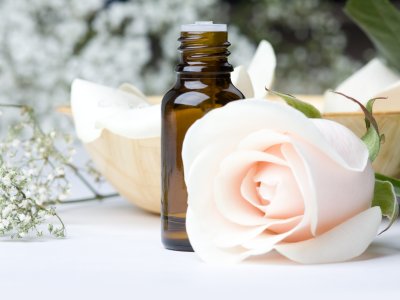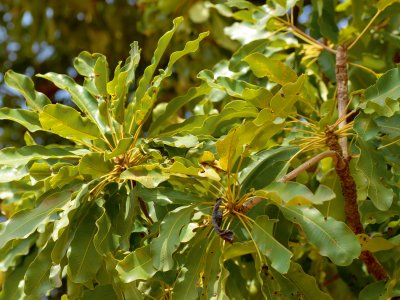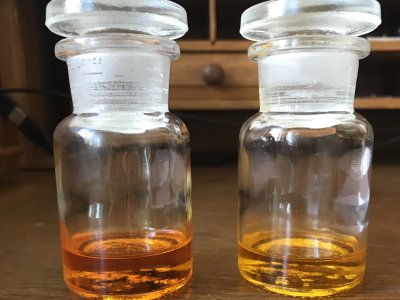Complete Guide to Aromatherapy

The Complete Guide to Aromatherapy
1995 edition
by Salvatore Battaglia.
Reviewed by Martin Watt.
I thought parts of this book looked impressive until I started on the essential oil monographs. In those he includes the usual nonsense from earlier aromatherapy authors. They took the traditional uses of herbs and assumed the external application of an essential oil would have the same effects. All those earlier books are riddled with errors and therefore, as he has drawn on them for reference purposes, so is this book full of errors.
To be specific on each oil and every chapter would require a book in itself, therefore below are a just few examples of the significant misinformation in this book.
Chapter 12 - The Essential Oils.
Page 167 - Grapefruit oil: We have the usual nonsense about it being useful in treating cellulite, etc. No attempt to justify or reference as to how the oil can be a diuretic when used eternally. Likewise no attempt to justify its use as a "lymphatic stimulant". Since hardly any essential oil is absorbed by the skin how it can get into the lymphatics is a mystery.
Page 174 - Lemon oil: He makes no attempt to justify or reference statements such as: "Anti-anaemic, tonic to the circulatory system, for high blood fat and cholesterol, cellulite,"etc. We see the oft repeated error that lemon oil is astringent when this is an action of lemon juice. A total lack of understanding that an astringent is the opposite of a rubifacient; yet both are given as properties of lemon oil.
Page 197 - Sage oil: Under the entry for 'body-medicinal uses' we have numerous medicinal claims that are entirely based on the use of sage herb as a traditional medicine. Those herbal extracts are water or alcohol soluble and contain hundreds of active chemicals that do not occur in the essential oil. For example, the astringent action of sage extract is due to the tannins and these do not occur in the essential oil.
Page 203 - Thyme oils: All the historical references are to the herbal use of thyme, not the essential oils. The claims for some of the chemotypes are invention and speculation based on the major components in these oils. That method is packed with errors. Many of the claimed uses are of the herbal preparations taken internally.
Page 206 - Yarrow oil: Around 80% of the therapeutic uses are those of yarrow herb, NOT the essential oil. The safety or otherwise of this oil is not known.
Chapter 14 - Hazardous oils.
Page 234 – Camphor: The essential oil sold as “camphor oil” is nothing like crystalline camphor which most of this information is about. The uses of camphor or camphor oil are all mixed up and misleading.
Pages 231 – 243: There are some good warnings on the dangers of some of these oils, but insufficient indications when talking of their past uses, as to if it was the herb or the essential oil being used. Personally I cannot see the point in warning people away from the oils, if you then go on to list the traditional uses of the herb. This book is supposed to be about essential oils and many aromatherapists get confused over the major differences and might be tempted to use the oil instead.
Page 331 - Varicose veins.
There is no evidence that the suggested oils can do anything for this condition. Since there is no evidence that the essential oils can get into the blood via this method then they cannot have any physiological activity on the veins. Again the misleading information by claiming the oils will have an astringent effect which they don't.
Page 350 - Herpes simplex.
The oft quoted error about Melissa oil being anti viral. All research indicates that activity is only in the water soluble portion of the plant. Neither is there any evidence that any of the other suggested oils are anti viral in-vivo.
I will leave it at that despite there being numerous additional errors of fact, or misinformation.
SUMMARY.
The therapeutics information is appallingly inaccurate and potentially dangerous for those who assume the oils will do the same job as the herbs on which much of the information is based.
This type of writing indicates an author who has attempted to make his work impressive by throwing in a few scientific references, yet clearly does not have the ability to sort the wheat from the chaff of the earlier aromatherapy novelists that he has copied.
I would not recommend this book as an authoritative text on aromatherapy in the manner many aromatherapy organisations still do. Courses teaching this type of information are charging their students exorbitant fees for wrong and in some cases dangerous information. Doubtless this author will bring out revised editions or other works, but this book shows someone who had little understanding of the true uses for essential oils when he first wrote about them.
Source and copyright: http://www.aromamedical.org


